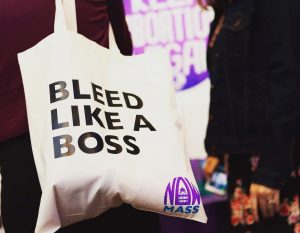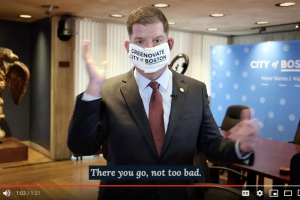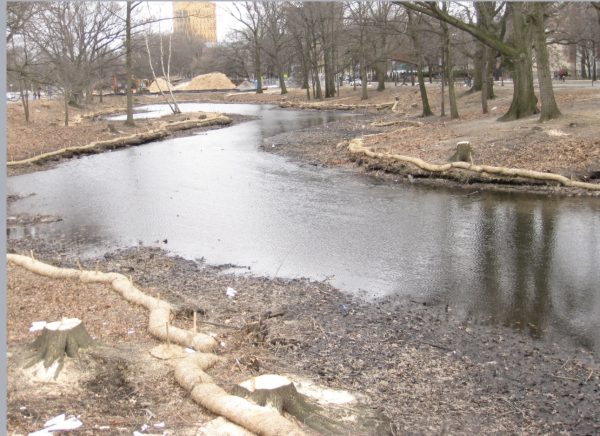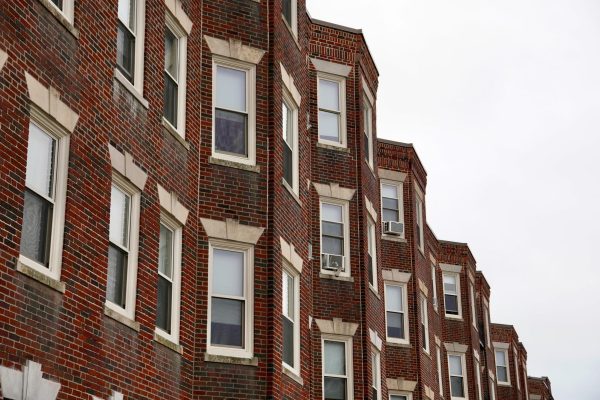How Mass. voter engagement groups adapt to continue advocacy during COVID-19
Pre-pandemic, voter engagement groups relied heavily on face-to-face interactions to do their work. But this year, with safety measures like physical distancing still in place, organizations must get more creative in reaching out and encouraging voters to cast their ballots in the fast approaching 2020 elections.
Many groups in Massachusetts are turning to phone banks, Zoom events and social media to reach voters, while others organize webinars to increase vote by mail literacy.
Many voters have responded positively to voting by mail, appreciating an alternative to crowding at the polls. Historically, only 3% to 5% of eligible voters vote absentee in Massachusetts, which is through the mail. This year, 50% to 75% of voters are expected to cast their vote by mail, according to MassVOTE, a nonprofit organization seeking to increase voter participation in Massachusetts.
Reaching voters through phone banks and social media
In the social distancing era, voter outreach, an activity most effectively done through face to face interaction, has been moved to the virtual space.
“[Pre-pandemic], it was going door to door. It was putting up tables, whether that’s on campus or at community centers or grocery stores, just to help individuals register to vote,” said Alex Psilakis, policy and communications manager at MassVOTE. “We’re holding virtual voter registration drives with organizations and universities across the state. We’re holding phone banks to raise awareness around the new vote by mail legislation…things like that.”
Whether through phone banks, texting, social media, virtual meetings or webinars, groups are getting creative to reach voters.
“Someone told me that one of our local leagues out in western Massachusetts was doing a register-to-vote car parade…with big signs and the [voting deadlines] really large,” said Patricia Comfort, executive director of the League of Women Voters of Massachusetts (LWVMA). “We’re using social media and creating graphics around the time frame for registering…so that people know what the deadlines are.”
Language accessibility is also a priority for voter engagement groups. Comfort said LWVMA tries to have all its messages and social media posts in various languages so non-English speakers can access the information.
Virtual outreach means voter engagement groups are able to connect with more people more quickly. “We don’t have to run around all over the state,” said Psilakis.
But while they’ve been able to reach “hundreds, if not thousands of homes,” Psilakis said the outreach still lacks a “personal aspect,” and that the higher quantity can’t substitute the lower quality of connections.
“Phone banks are really successful, but in two hours of phone banking, you’re lucky to have five conversations with people,” said Psilakis. “It’s the person to person interaction…those tend to be the really effective ways.”
Increasing vote by mail literacy
Massachusetts Governor Charlie Baker in July signed a law that made voting by mail available to all voters for all elections in 2020. Registered voters do not need an excuse to vote by mail in the state primary and the November general election this year.
The unfamiliarity of vote by mail does bring confusion to voters, with the biggest question being how it is different from absentee voting, which Massachusetts has always had.
“It is a very nuanced issue, but rightly confusing,” said Psilakis. “To vote absentee, you have to have an excuse. And that applies during any election, all the time.”
The new legislation allows for voting by mail without an excuse. “For all intents and purposes, absentee voting and vote by mail, at least for this year, is the same thing,” said Comfort. “My understanding is that there are some technical differences…but we’re not focusing on that because we feel like it’s too much in the weeds.”
“Basically, anyone can vote by mail,” said Comfort.
In Massachusetts, the Secretary of State has been mailing registered voters an application which they must fill out, mail to their local election officials, and then they will receive ballots to vote by mail. Voters will fill in their ballots and mail them back to their local election officials.
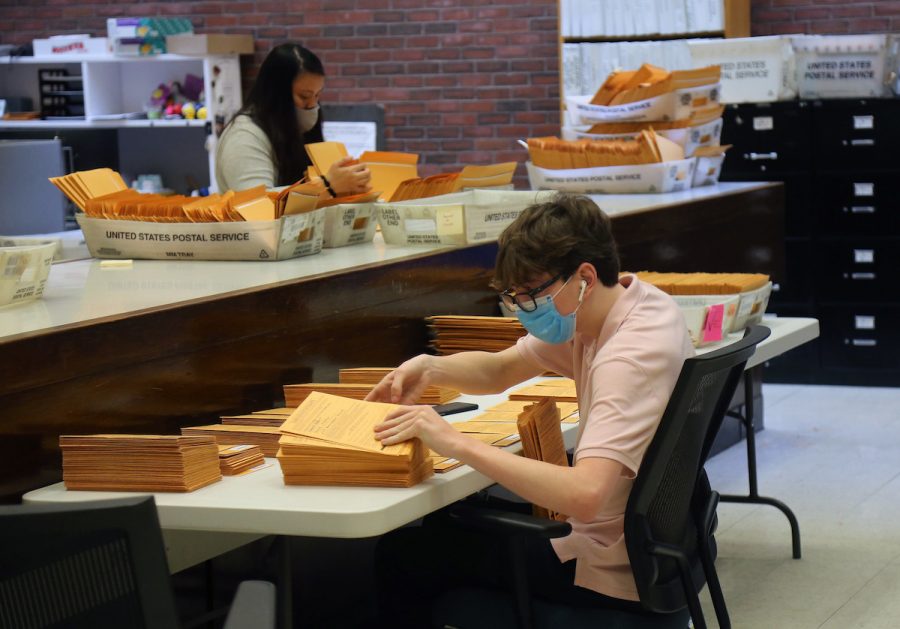
“The system that’s been passed includes prepaid postage,” said Psilakis. “You don’t need to include a stamp or anything. You can literally just sign [the application or the ballot], put it back in your mailbox, and it’s done.”
By Oct. 1, the Secretary of State will create an online portal where individuals can request a ballot online instead of mailing the application.
In response to concerns that vote by mail would reduce voter turnout, Kristina Mensik, assistant director at Common Cause Massachusetts, said, “If anything, we have seen in states with vote by mail that participation increases.”
“Elderly individuals are more likely to vote by mail because they are worried about their health in this time,” said Psilakis, “And they’ve just been using the postal service for a lot longer than most of us…so they trust the mail.”
Providing prepaid postage for mail-in voting was a move aimed at supporting people in lower income households and younger voters, who don’t often send mail using stamps, said Comfort. The nonprofit she works for, LWVMA, assisted the state in drafting the July law with that provision.
Easing public concern to vote by mail in the face of fraud claims
Through their public outreach, these groups have seen a generally positive response to vote by mail.
“I think most people like it because it’s so convenient,” said Psilakis.
Even though vote by mail is new in Massachusetts, residents are quick to adapt, given the current circumstances. “The value of vote by mail is intuitive,” said Mensik. “People understand that not offering vote by mail during a global pandemic is essentially voter suppression, because people will not feel safe going to the polls.”
Regardless, recent rhetoric from the Trump administration that denounces vote by mail as fraudulent has cast uncertainties. These groups have been quick to assure voters that the claim is unfounded.
“There are so many steps in place to make sure that voter fraud doesn’t happen,” said Psilakis. “When you sign your ballot to submit it by mail, it is compared with the signature you have on file with your voter registration. They’ll look at your signature on your ballot and your signature on your registration, and if they’re not similar enough, then they’re going to contact you and say, ‘Hey, can you submit another ballot, or just come in and vote?’”
On top of that, if voters are still unsure, they have the option of physically delivering their ballot in lieu of mailing it.
“They can also call their local elections officials to ask where a secure drop box will be located so that they can go and hand deliver their ballot,” said Mensik. The drop boxes are set up with a high degree of security, decreasing the chances of fraud.
“These ballots are deposited in very secure settings, where there’s 24/7 video surveillance,” said Psilakis. “It’s not like people can just go in, take 100 ballots, mess with them and put them back.”
In order to combat the claims of fraud, these groups have been using statistics to prove their invalidity, citing examples from states like Utah and Colorado that have always had no-excuse vote by mail.
“There’s really nothing in terms of evidence of fraud,” said Comfort. “Just putting out the data around other states that have been voting by mail for years with absolutely no problems, no fraud or negligible crime, nothing.”
Most reported incidents of voter fraud are traceable to sources like clerical errors or bad data matching practices, according to a finding by a 2007 report by the Brennan Center for Justice, The Truth About Voter Fraud. The report reviewed elections that had been previously studied for voter fraud and found that the incident rates are between 0.0003% and 0.0025%. Meanwhile, the Washington Post’s review of the 2016 election found four documented cases of voter fraud.
Ultimately, in a situation that demands reduced crowding at the polls, vote by mail is the safer option.
“We want everyone to be able to vote and vote safely in this election, and so vote by mail is the way to go,” said Comfort. “The coronavirus doesn’t differentiate between the Right and a Democrat, so if people are uncomfortable physically going to the polls, they need to have an option to exercise their right to vote. Basic fundamental tenet of democracy is voting, and so we don’t want anyone to have to choose between risking their health and voting.”
If voters do choose to vote by mail, these groups are asking them to submit their documents as early as possible because officials aren’t used to more than 3% to 5% of residents voting by mail.
“[Processing the ballots] is a long, laborious process,” said Psilakis. “We’re worried that local election officials are going to be overwhelmed. So, we’re encouraging people, the moment you get that application, put it in the mail, that way you’re first in line to get your ballot.”
Advocating for a better mail-in voting system in the future
Although the new vote by mail law aims at addressing voting problems caused by the pandemic, some of the groups said the legislation cannot permanently solve the problems of an “antiquated” Massachusetts voting system.
“This law, I should say, sunsets on Dec. 31. It’s only good through this year,” said Comfort. “Massachusetts, believe it or not, is in, what I would call, the dark ages, when it comes to election reforms.”
Until July, Massachusetts did not have early voting for their primary and it had an excuse-required system for absentee voting, which meant most people were expected to show up on Election Day at the polls to vote.
The July law addressed these issues for this election season, but not everything that was sought after was implemented.
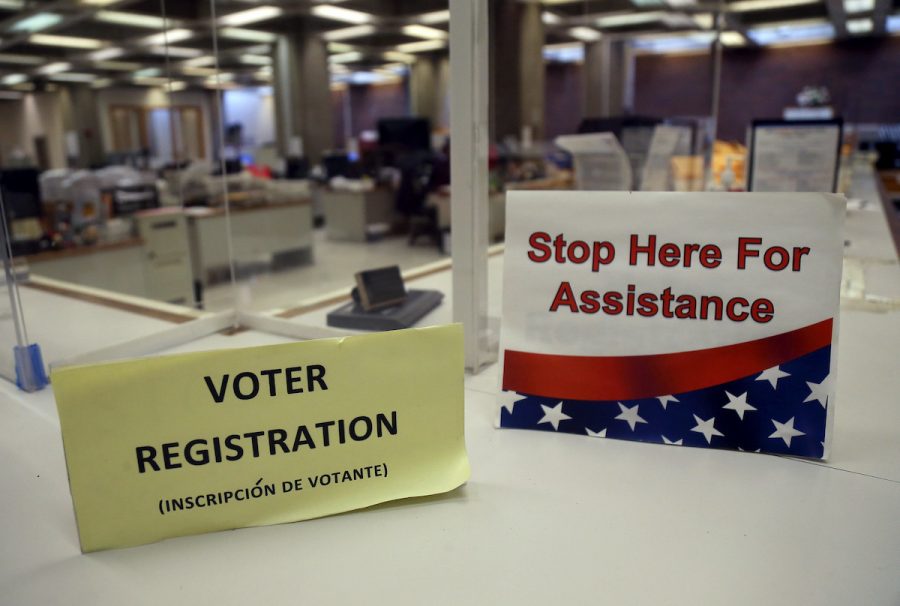
LWVMA pushed for the vote by mail law to skip the application process and allow the Secretary of State to mail a ballot out to every registered voter. Removing the additional step, Comfort said, can increase voter turnout, limit costs, limit operational work and make the process more efficient. “[The proposal] just didn’t go anywhere, because [the legislators’] fear was there would be photos taken of ballots laying around apartment foyers and hallways and they just didn’t want that bad press.” said Comfort.
“My hope is that in Massachusetts, the things that go wrong and the things that go well in our 2020 elections will show us very clearly what next steps need to be for Massachusetts reforms,” said Mensik.
MassVOTE, LWVMA and Common Cause Massachusetts said they will actively work towards changing measures like excuse-required absentee voting.
“You shouldn’t need an excuse to vote by mail, it’s ludicrous,” said Psilakis.
Once these groups obtain relevant data after the elections, they will be able to identify the appropriate changes that need to be made.
“We’re trying to catch any glitches or problems with the system so that we document those and basically come out of this election with a really good set of data that we can use on Beacon Hill next year to show that this is what we should be doing all the time,” said Comfort. “Vote by mail should be something that we do in Massachusetts going forward, that should be the state of the law. So, we’re all going to be pushing for that next year.”



